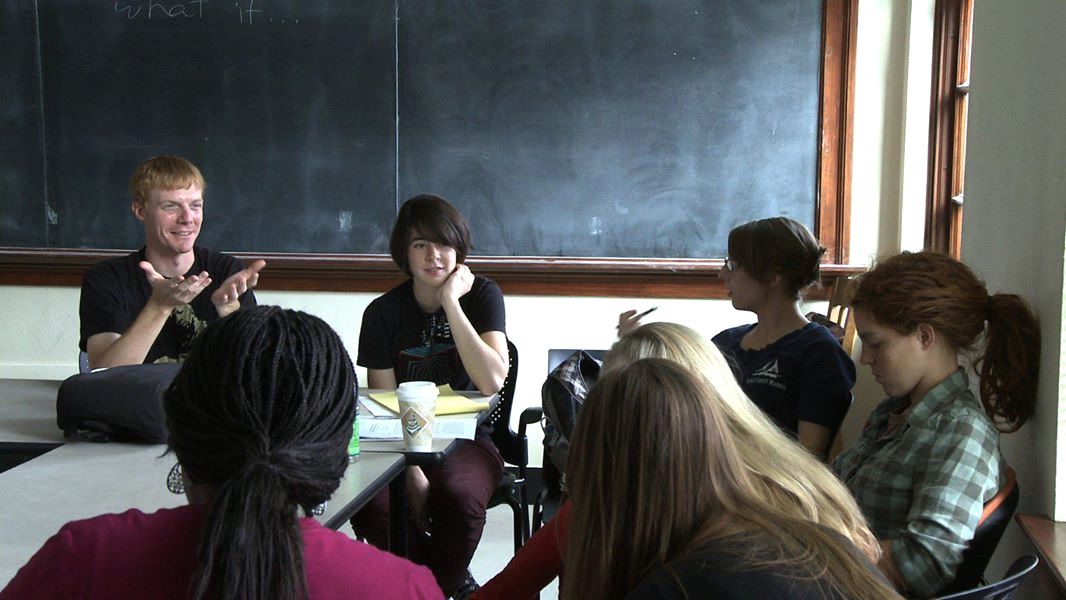I’ve spent the last month in a leg brace and the first two weeks of it on crutches. The experience has slowed me down in many ways, not all of which were bad. I’m not recommending cracking a kneecap to get reacquainted with reality, but a good jarring of the sensorium might help us all once in a while. As Doug Rushkoff said recently, “Reality is the human’s home turf.” Nothing brings reality crashing back in like crashing into reality.

In addition to my patella, I also smashed my phone. The cracking of its screen left it useless for texting or taking pictures. Ironically, the only thing it will do now is send (provided I know or can find the number) and receive calls. I also haven’t been wearing headphones as my injury already makes me an easy mark. These two things — no texting and no headphones — reconnected me with aspects of my days I’d been avoiding or ignoring.

Also, I’ve had to change up my commute. For one thing, I haven’t been able to ride my bike to work (obviously), which is what I was doing when I crashed. And I haven’t been able to take the train because I couldn’t walk that far on crutches. It should also be noted that there are only a few CTA train stations with elevators. Stairs were out of the question for a few weeks. This put me on a multiple bus-route commute that took me through parts of Chicago I’d never seen.
Possibly the most important factor that has made this an enlightening experience is sociological rather than technological. Collectively we tend to other the impaired among us. That is, there seems to be a clear delineation between the impaired and the normal; however, if one of us is only temporarily injured, we sympathize, empathize, or pity them.
In the month that I haven’t been texting or listening to music and have had a bum leg, I’ve had countless uplifting and informative conversations with people whom I wouldn’t have spoken to otherwise and who wouldn’t have spoken to me for one reason or the other. All of the above has made me feel far more connected than any technology or so-called “social” media.

Speaking of, I posted this on Facebook about a week into my recovery, and I repost it here because it garnered the most response of anything I’ve ever posted on there:
My smashing my knee into the pavement at the origami triangle fold of traffic that is the intersection of Elston, Fullerton, and Damen in Chicago has shoved me out of my comfort zone in several ways. One thing I noticed today on my temporarily revised, much-longer commute to campus is a lot of needless anger: a man walking by the bus stop, angry at his dog for being a dog; a lady with her children, angry at them for being children; people on the bus, angry about being on the bus; the bus driver, angry about the people on the bus; and on and on.
I’m not exactly happy that my right patella is fractured in two places, and I’ve certainly had good and bad days since I broke it, and I’m not better than any of those mentioned above, but I try to smile at everyone, laugh at my fumbling around on crutches, do my work, and generally let others carry the anger.
It’s so easy to be angry, but it doesn’t take much more effort to be pleasant, and being pleasant makes everything easier for everyone.
Getting out of your comfort zone doesn’t have to be quite so uncomfortable, but sometimes being forced is the only way for it to happen. It feels like I needed it.
With that said, a physical therapist saw me out walking with my leg brace on the other day. He stopped and asked me about my injury with genuine and professional interest. He then informed me that a broken patella is the most painful kind of injury, which, he added, is supposedly why it is the chosen punishment for those late on their loan or gambling payments. I don’t recommend getting behind.














